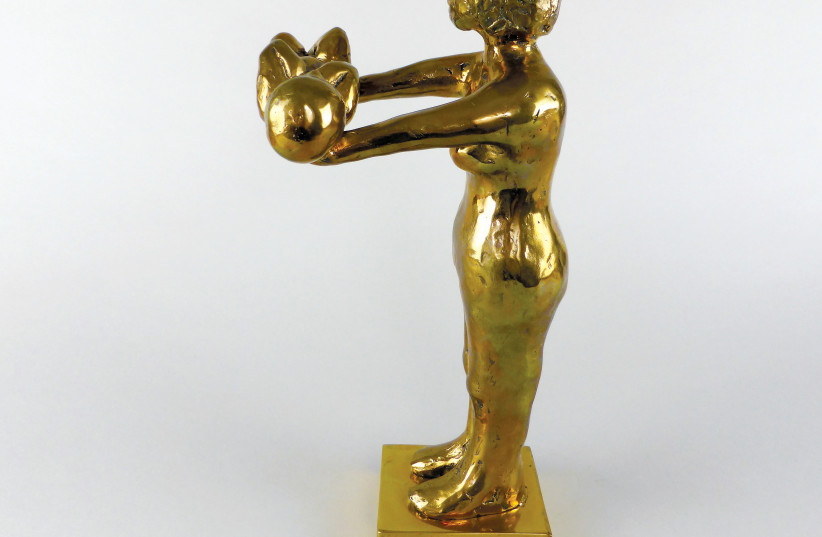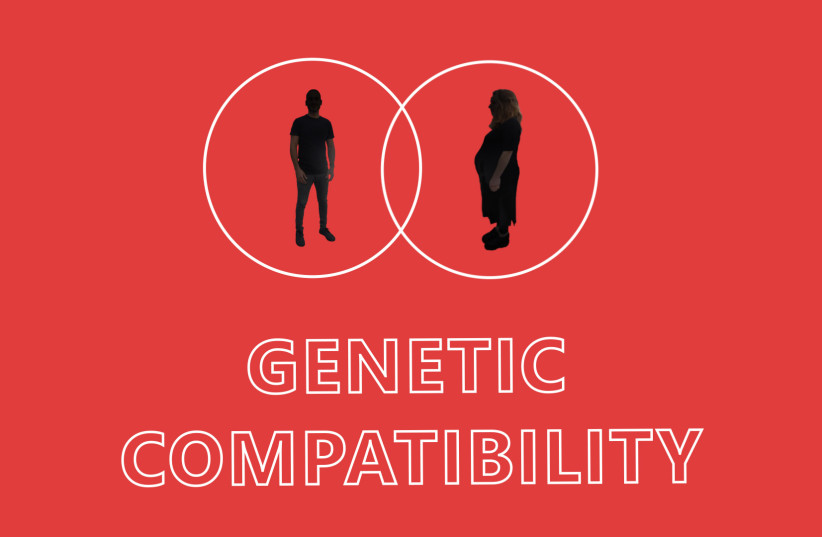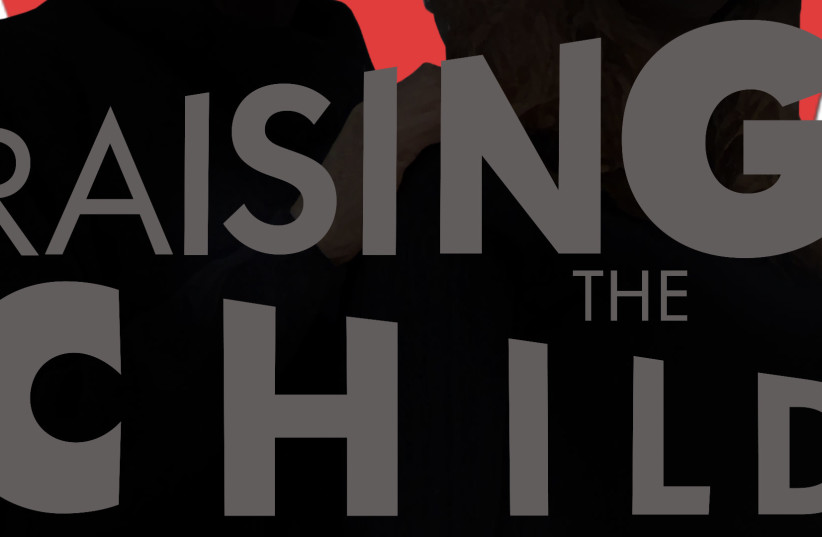Where do babies come from: New exhibition examines the options

Ruth Schreiber’s new exhibition spotlights many of the seeming multitude of options for becoming a parent, now facilitated by advances made in the medical and hi-tech fields.
Life used to be so much simpler, didn’t it? No, for once, this has nothing to do with COVID-19 shenanigans, or even a bygone era when you offered your guests either tea or coffee, with few or no permutations on either beverage to be had.
Ruth Schreiber’s contribution to the current round of the Jerusalem Biennale for Contemporary Jewish Art harks back to a time when men and women got together, in true biblical style, and just went forth and multiplied. Then again, her creative purview casts the procreation process net so much further.
She calls her show, which runs at the Ramban Synagogue on Amatzia Street between December 15-30, Where do babies come from?, with the exhibits spotlighting many of the seeming multitude of options for becoming a parent, now facilitated by advances made in the medical and hi-tech fields.
Among the many pathways to assuming the role of parent, the veteran British-born multidisciplinary artist cites ovum donations, artificial insemination, mitochondrial DNA replacement and surrogacy. There are also several combinations of the above available, whereby the donor may be someone you know, or one could go to a sperm or ova bank. The parents-to-be could be a couple who, for some reason, are unable to have babies the traditional way due to fertility-related problems. Or they may be a same-sex pair and, of course, require the services of a person of the opposite gender.
All of that, and more, is addressed in Schreiber’s exhibition which takes in installations, sculpture, video works and even a hologram of a baby, created by Yaniv Cohen, which brings the corporeal message home.
But what led Schreiber into this most complex of societal morasses? The business of nonconventional conception, while becoming ever more widespread, is still a sticky issue, on all sorts of levels.
Schreiber knows Prof. Rabbi Avraham Steinberg, who will deliver a talk at the exhibition called Halachic Solutions to Medical Challenges on December 19 (6 p.m.). Sounds contentious and definitively intriguing.
“Some time ago Avraham Steinberg invited us to go to a short talk he gave at the Knesset on the Encyclopedia Talmudit which he was dusting down and reenergizing that project,” says Schreiber referencing the Hebrew language encyclopedia which summarizes the halachic topics of the Talmud in alphabetical order. The project started out back in 1942, with 46 volumes published thus far.
Steinberg hit the familial nail on the head right from the outset. “He said that early in the encyclopedia is the word Av – aleph bet – father. He said, ‘how do we now define father?’” If anyone is qualified to discuss that and other related issues it is Steinberg, whose manifold fields of professional interest include serving as a medical ethicist, pediatric neurologist, rabbi and editor of Talmudic literature. “He asked if it is the sperm donor, say, when the sperm does not come from the husband of the woman who is giving birth. Who is the father? And then Avraham asked who is the mother? You can have a surrogate carrying the child. He got involved in the halachic aspects of that. It is so complicated.”
There are, Schreiber learned, numerous aspects and knots to be unraveled before such quotidian matters can be spelled out and resolved. “In different parts of the world the law is different,” Schreiber points out. “I learned that, in the state of New York, if a surrogate gives birth she is the parent, the mother of the child legally, and the genetic parents have to adopt the child.” The non-federal plot thickens. “In the state of Pennsylvania it’s the genetic parents who are the legal parents. There are different laws around the world. So I have been very interested in that.”
That interest, naturally, finds its way into Schreiber’s oeuvre and the layout over at the Ramban Synagogue.
The animated works cover quite a few parental amalgams, including a religious woman who had not managed to find a male partner while her biological clock wound down, partners from two same sex couples – one female and one male – and a gay man who fathered three children for a lesbian couple. Schreiber made sure she’d done her homework before putting her insight and observations into tangible and visual form.
“I started interviewing different people who had babies not with their partner,” the artist notes. “I interviewed a lesbian couple. I interviewed two single mothers, one of them orthodox, who had chosen to have babies without a husband, or a male partner.”
Schreiber is not only interested in the artistic presentation of the bifurcating familial state of affairs, she is also examining the possible across-the-board fallout. “I am fascinated by what this is doing to our society,” she continues. “It is very complex.” She feels things may be getting out of hand. “It is only in recent years that sperm donors have been limited here in Israel, to 10 donations in the country. Until around five years ago, they could go from one hospital to another, one clinic to another.”
Schreiber feels there could be serious ramifications to a laissez-faire approach to sperm donation. “I think we need to keep a monitor of whose genetic child somebody is. They weren’t keeping a register. That’s why I got involved in it.”
She certainly has the street “cred.” “I’ve always been interested in pregnancy. I am a mother of six children,” she explains. “It has been a big part of my life.” And work. “I have always done artwork about pregnancy. A couple of pieces that are in this exhibition are quite old.”
WHAT ABOUT Orthodoxy? Surely the Jewish Orthodox community is less enthused with the idea of members of the next generation issuing from outside the accepted nuclear family norm.
Not so, apparently. “Many Orthodox women are having babies on their own,” Schreiber enlightens me. And no one frowns on that? “I think it is regrettable that they don’t have a husband. But, as far as I know, it is not frowned upon.” Schreiber says the same goes for surrogacy.
As the son of a Holocaust surviving mother, with close to 50 progeny across three generations, Schreiber’s observation about the Jewish propensity for fulfilling the first divine instruction in the Torah rang particularly true for me. “There is such a strong drive to have children – pru ur’evu (be fruitful and multiply) is the first commandment. As I understand it, the Jewish religious way is to encourage family life and, if you haven’t got a ready in-house husband to be a father then you’ll find a different one. You’ll get help, especially if the man has a low sperm count or something like that. There are techniques that can help.
“So I think Orthodoxy is as restrictive as you would expect it to be in this area.”
Then again there are certain cast iron religious constraints. “The big fear, as I understand it, is mamzerut (illegitimacy), forbidden relationships,” Schreiber adds, noting there are concerns that, while bringing joy to many people who would otherwise not be able to realize their dream of becoming parents, the situation could get out of hand. “That’s the problem – when a sperm donor fathers dozens of children and you don’t necessarily know who the biological father is.”
That could entail matters relating to taboo unions, such as those that might open the door to incestuous relationships. However there are scientific advances that can help to resolve such pressing conundrums. “One of my interviewees said to me she’s not worried about that because, when the time comes if they wanted to, her children could do a DNA test. They could check, vis-à-vis their intended to make sure they are not blood relatives. It makes for complicated relationships but there are techniques to check that.”
Still, Schreiber believes a conventional family framework, with parents of different genders, is the ideal set of circumstances in which to raise children. “I do worry a little about what sort of society we are creating. There are a thousand Jewish women, in Israel, every year having babies without a husband, without a father for the baby.” I wonder if she views that as a genetic issue. “No. So many children are growing up without a father.” Not that Schreiber is looking to prevent single women, who may be in their mid-forties and anxious they are going to miss the boat, from experiencing motherhood. “They should be able to, but there are so many. It is so widespread. I think it’s a worry.”
Perhaps that says more about contemporary life here, and about how we go about connecting with others, possibly, especially in a social media-laden virtual communication world. “It is a bit of a worry, but all the kids are accepted. They are kosher. If the mother’s Jewish the children are Jewish.
There are other commonplace practicalities to be addressed too. “Bringing up children is difficult,” says the mother of six. “A single parent has it twice as hard.” Actually, even when there are two parents on hand, bringing up a family can be anything but a picnic. Schreiber encountered a particularly complex familial setup. “I interviewed a gay man. He and his partner had twins with two surrogates. They’ve got four children all the same age.” That must make for some interesting birthday celebration logistics.
The essence of those interviews are conveyed to the viewer via the animated items created by Sveta Knokh, working as per Schreiber’s guidelines.
Clearly there is much more to this exhibition than meets the eye and ear. “I hope what I’ve done will resonate with people,” says Schreiber. That seems to be a pretty safe bet.
Jerusalem Post Store
`; document.getElementById("linkPremium").innerHTML = cont; var divWithLink = document.getElementById("premium-link"); if (divWithLink !== null && divWithLink !== 'undefined') { divWithLink.style.border = "solid 1px #cb0f3e"; divWithLink.style.textAlign = "center"; divWithLink.style.marginBottom = "15px"; divWithLink.style.marginTop = "15px"; divWithLink.style.width = "100%"; divWithLink.style.backgroundColor = "#122952"; divWithLink.style.color = "#ffffff"; divWithLink.style.lineHeight = "1.5"; } } (function (v, i) { });



